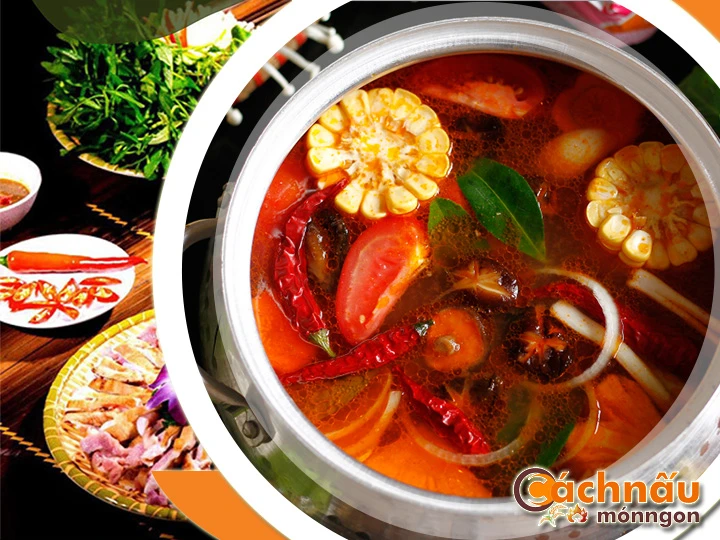Explore the Authentic Rabbit Hot Pot Ideas You Must Try - Lẩu thỏ
Explore the Authentic Rabbit Hot Pot Ideas You Must Try - Lẩu thỏ
Blog Article
Rabbit hot pot, a yummy and culturally significant meal, has been beloved across diverse culinary traditions for centuries.
This comprehensive guide explores all aspects you need to be aware of about rabbit hot pot, from its historical background to modern variations, nutritional values, and cooking directions for creating the ideal dish at home. Whether you are a skilled chef or a curious beginner, this guide will encourage and guide you to excel in the technique of rabbit hot pot.

EXPLORING THE EVOLUTION & CULTURE CONCERNING RABBIT STEW.
Rabbit hot pot is a one-of-a-kind and heritage-rich dish with meaningful customs in multiple countries. Its demand stems not only from its flavorful flavor but also from its past and cultural importance.
1. The Beginnings of Rabbit casserole.
- Historical Roots: Stewed rabbit started in villages where these animals were a accessible, healthy food source. In ancient China, it was a cherished meal, particularly during cultural gatherings.
- Widely Popularized: In parts of Europe like Spain, rabbit was often included in slow-cooked dishes, changing into modern versions of braised dishes as the dish spread across cultures.
2. Rabbit Casserole in East Asian Culture.
- Across China: Known as the traditional rabbit hot pot, rabbit hot pot is popular in the culinary traditions of Sichuan, recognized for its pungent flavors and loved during reunion dinners.
- Throughout Korea and Japan: While less prevalent, rabbit hot pot is rarely created as a therapeutic meal in Korea, or taking cues from Japan’s nabemono-style cooking in Japan, featuring local produce and flavoring ingredients.
- Throughout Vietnam: Although rabbit hot pot is not a regular meal, it is well-known during festive events or in agricultural communities where rabbit meat is accessible. It is often enhanced by distinctive spices such as lemongrass, zesty ginger, and spicy chili, paired with fresh vegetables like water spinach, spicy greens, or sensitive plant. This dish is highly valued for its distinct taste and wholesome qualities, frequently shared at family and friend reunions.
Tại đất nước Việt Nam, tuy không phải là món ăn thường dùng đều đặn mỗi ngày, nhưng được biết đến trong những sự kiện quan trọng hoặc ở những vùng nông thôn, nơi thịt thỏ dễ dàng tìm thấy. Thường được kết hợp với các loại gia vị như sả, vị cay từ gừng, và vị cay nồng của ớt, kết hợp với rau muống. Món ăn này rất phổ biến nhờ vị ngon độc nhất và giá trị dinh dưỡng cao, thường các bữa tiệc gia đình.
3. Stewed Rabbit within European Cuisine.
- Across France: Frequently enjoyed as a hearty stew with red wine sauce, aromatic herbs including rosemary, and earthy roots. Rabbit hot pot is a time-honored dish for family reunions.
- Italy: The dish “Cacciatore”, featuring rabbit cooked with tomatoes and wine, is a inspiration for rabbit hot pot dishes.
HOW TO COOK RABBIT HOT POT: RECIPES AND TECHNIQUES
Rabbit hot pot is a flexible dish that combines natural components, savory broths, and unique cooking techniques to create a filling and delicious feast. Below are key steps into the key recipes and techniques to excel in rabbit hot pot.
Essential Recipe for Rabbit Hot Pot
* Required Ingredients:
- 1 whole rabbit (chopped into parts)
- 4 cups of broth (chicken)
- Vegetables (potatoes)
- Spices and herbs (thyme)
- Seasonings (chili paste)
- Optional: rice for serving
* Steps:
- Prepare the Rabbit: Rinse and chop the rabbit into pieces. Prepare with salt, black pepper, and a splash of soy sauce for 30 minutes to enrich the flavor.
- Create the Broth: Heat a pot with a touch of oil. Cook minced garlic and sliced ginger until fragrant. Add your choice of broth and bring it to a boil.
- Cook the Meat: Add the rabbit pieces into the pot and let them cook chế biến lẩu thỏ slowly on gentle heat for around half an hour until soft.
- Include the Veggies: Add your chosen vegetables and cook until they are softened but still vibrant.
- Serve: Transfer the hot pot to a serving dish. Serve with side dishes and side options like rice or noodles.
Mastering Rabbit Hot Pot Techniques
- Seasoning:
. Marinate the rabbit with a mixture of salt, pepper, and spices to enhance its original taste.
. For more complexity, use wine, soy sauce, or a mix of herbs like rosemary and thyme.
- Building Layers of Flavor:
. Start by boiling the rabbit in the broth to extract its savory taste.
. Gradually add vegetables based on their cooking times.
- Cooking Time:
. Avoid overcooking the rabbit, as it can turn chewy.
. Test for readiness by checking if the meat easily separates from the bone.
- Broth Adjustments:
. Perfect the flavor by adding extra herbs as needed.
. Experiment with different types of broths, such as spicy Sichuan-style variations.
Pro Tips for Rabbit Hot Pot
- Quality Matters: Always choose fresh rabbit meat and farm-fresh produce for the best results.
- Taste and Adjust: Be attentive of the spiciness in the broth. Taste and adjust frequently during cooking.
- Dipping Sauces: Offer a selection of sauces like sesame paste or soy-based dips to enrich the dining experience.
- Presentation: Use a tabletop cooker or serve the hot pot as the centerpiece to promote sharing.
By mastering these cooking techniques, you can make a rabbit hot pot that’s delicious and attractive, turning it into a highlight for any dining experience or gathering. Report this page